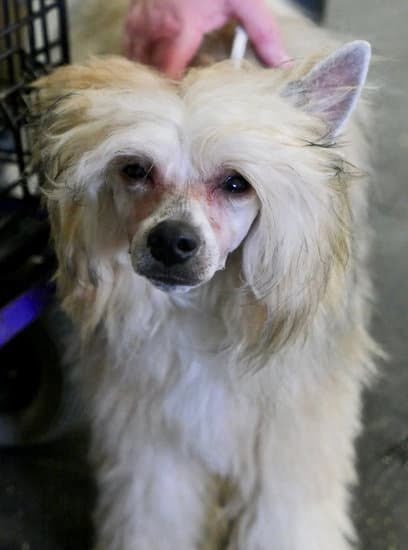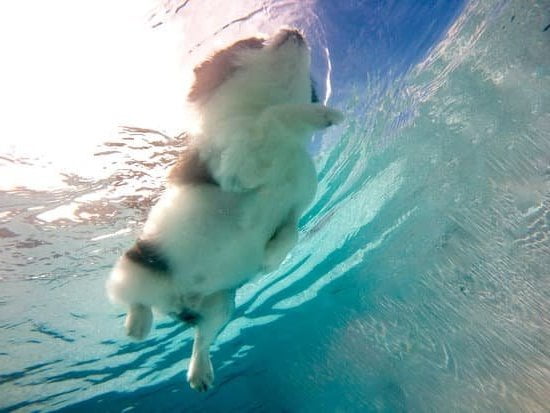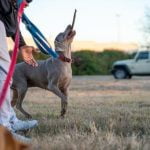Introduction
Potty training a toy breed dog can be a daunting task for many pet owners. Toy breeds, such as Chihuahuas and Yorkshire Terriers, typically have smaller bladders and shorter attention spans than regular-sized dogs. Because of this, potty training them requires extra patience, consistency, and dedication from the owner. The goal for any successful potty training program is to have a toy breed dog that is completely housebroken within four to six months. Here are some best practices to use when potty training a toy breed dog:
1. Establish an Appropriate Potty Area: Choose an appropriate place outside in your yard where the toy breed dog will go whenever they need to relieve themselves. This area should be away from their living quarters and should be consistent so that they become accustomed to going there every time they need to potty.
2. Stick With a Feeding Schedule: Feed your toy breed pup at the same time every day and do not leave food out between meals as this can lead to accidents. Remove all food early in the evening so that you don’t have any unexpected potty issues due to indigestion while they sleep overnight (this applies mainly to puppies).
3. Reward Good Behavior: Praise your puppy or small breed dog when they use their designated bathroom area correctly or when they show positive behavior towards toilet training in general (for example if your pet gets into position for going outside quickly when you take them). This will help encourage good habits to form over time which will make toilet training quicker and easier for everyone involved!
4. Be Consistent and Set Limits: Many people make the mistake of giving their pet free range of the whole house in hopes that this will prevent them from having accidents indoors – but what ends up happening is most times unfortunately counter productive! Dogs need boundaries set up so it’s important you limit their access solely inside the areas like kitchens or living rooms where there is no risk of them having accidents while still being able to keep them close by you if necessary (for security & comfort purposes). It’s also important that once limits are set, you stick with them – consistency is key!
Understanding the Physiology and Uniqueness of Toy Breed Dogs
When potty training a toy breed dog, it is essential to first consider the uniqueness of these dogs. Toy breeds are often as smart and autonomous as larger breeds; however, their physiology can often be overlooked when potty training them. Toy breeds have small bladders that fill up quickly, and they aren’t able to “hold it” for extended periods of time the way larger dogs can. They also need to go out more often because they use the bathroom in smaller amounts than large breed dogs do. This means that establishing a regular schedule with frequent trips outside should be an integral part of successful potty training for your toy breed. In addition, since these breeds are especially sensitive to environmental conditions, using positive reinforcement techniques will work best when teaching them proper toileting behavior. Lastly, you should make sure that your toy breed always has access to its designated toileting area (e.g., a practice pad). Praising or rewarding your dog each time it uses this spot correctly will reinforce good habits and help in its trainability over time.
Establishing a Consistent Potty Routine
When potty training a toy breed dog, it is important to establish a consistent routine. As with any puppy, you should take your toy breed dog out regularly and at the same times every day as much as possible. Additionally, for indoor potty training, you should always try to put your pup in their designated potty area — such as a mat or designated section of the house — when they become restless, start circling around, or lift their head up into the air. This way, they will begin to recognize that going to the bathroom on this spot is acceptable.
When taking your pup outside to go potty, make sure you use positive and calming words or gestures. Taking them outside should be an enjoyable and exciting experience so that they learn that doing their business outside is good and something to look forward to. Also, rewarding your pup after they’ve gone potty in the right spot – either with a treat or verbal praise – will motivate them further and help enforce proper behavior over time. Remember that consistency is key when it comes to potty training a toy breed puppy, so be sure to stay firm yet patient at all times!
Choosing the Right Designated Potty Area
When potty training a toy breed dog, it is important to start by choosing the right designated potty area. If your dog prefers to go outdoors, create an area with enough dirt or grass for them to dig and mark. Make sure that their designated area is far away from any street traffic or pollutants. If your dog doesn’t mind using puppy pads indoors, lay down a few in the same area consistently so they get used to going inside. For an outdoor pup, place some gravel on top of the grassy area near where you will be placing a house or enclosure for them. The texture of the material should feel pleasant beneath their paws and remind them of a natural environment.
Rewarding Good Behaviors and Establishing Clear Rules
When potty training a toy breed dog, it is important to reward good behaviors and establish clear rules. You will want to pick an area or spot outside where your pup can go to the bathroom. Stick with this spot consistently and don’t change it unless something happens and you must. Before each potty session, take your puppy on a leash out to their designated bathroom spot. Offer verbal praise and rewards such as treats every time they do their business in the correct spot. If your puppy goes in the wrong place, remain calm and say “No” in a firm but gentle tone then take them back out to the desired spot so they can try again.
Outside of potty training time you should be keeping an eye on your puppy at all times and watch for clues that indicate they may need to go outside, such as sniffing around, walking in circles or barking. Pay attention to these signs so that you can head-off any accidents before they happen. As your pup gets better at understanding when it is time to go outside and where they should go, gradually move away from rewards until they no longer need them to maintain good habits. Make sure you keep up this positive reinforcement even after successful potty training has been achieved—it helps cement behavioral patterns and further reinforces good behaviors!
Knowing When to Potty Train and How to Make It Easier
Potty training is essential when it comes to owning a toy breed dog. Since they are typically smaller than average breeds, there is a greater need for their owner to dedicate resources and time toward proper potty training. The first step to potty train your toy breed puppy is understanding the difference between what age it needs to be before you begin training and the difficulty of making the transition from eliminating indoors to outdoors.
At a young age, puppies can begin being trained as early as four weeks old. This is due to their small bladders and short attention spans. Starting early gives them time for repetition which helps imprint consistency into their minds. Furthermore, when teaching puppies how to potty train, reward systems make all the difference. Utilize treats after they use the bathroom outside in order ensure that they understand that they should do this repeatedly until it becomes routine. Additionally, immediately cleaning up any “accidents” inside the house will further demonstrate that indoor elimination is not an acceptable behavior pattern. If a puppy relieves himself inside then make sure it gets praise after he completes his business outside while wiping off any messes or smell within in your home directly after with an enzymatic cleaner so your pup will not re-use those areas again in lieu of enforced luck of smelllessness associated with previously used spots. Lastly, take caution not to punish toilet related mistakes as reprimanding works counterintuitively against getting optimal performance out of desired behaviors, instead utilize positive reinforcement towards good behavior through praise and reward based incentives for desired outcomes for more successful results when training your precious companion❣️
Addressing Common Potty Training Challenges
Toy breed dogs are often able to be house trained relatively fast, but it’s important to keep in mind that different breeds have different needs. Because of their small size, toy breeds can find it difficult to control their bladders and bowels for long periods of time. This means that potty training may take longer than with other breeds and you’ll need to be patient while introducing your pup to their new routine. Here are some tips for challenges you might face while potty training your toy breed dog:
1. Inadequate supervision: Toy breed dogs need more attention than other breeds when being potty trained as they have an even shorter bladder-hold time. As such, make sure you keep a close eye on your pup during the process and don’t leave them alone unattended for extended periods of time as they tend to have less bladder control.
2. Scheduling: It is important to develop a regular feed and exercise schedule for your toy breed pup during potty training; however, because of their tiny bladders, even following a set schedule won’t guarantee that accidents won’t happen. Your pup will need regular access outside at least every two hours or so for them to effectively learn where it is appropriate for them to do their business.
3. Consistent Discipline: Discipline is also key in housebreaking a toy breed dog; however, avoiding any overly harsh punishment if accidents occur can prove beneficial in the long run as well as help maintain a good relationship between yourself and your pup. Instead focus on positive reinforcement by praising them after they do what you ask or giving them treats when they eliminate outside successfully.
Understanding and Combating Common Difficulties
Potty training a toy breed dog can be an intimidating experience for some owners. Since these breeds are so small, it can be difficult to keep the house free of accidents, and their body language may not always be clear when they need to go outside. To make the process go more smoothly, there are a few things that owners should keep in mind.
First of all, due to their size, toy breeds will often require more frequent potty breaks than larger dogs. Keeping up with their schedule is key to helping them become comfortable with the routine and avoiding any accidents in between outdoor trips. Secondly, some toy breeds may struggle with aggressive behavior or submissiveness when being scolded or redirected, because they are naturally timid creatures. Owners must make sure to use positive reinforcement methods, like treats or praise; approaching them sternly may have adverse reactions such as fear or resistan ce. Additionally, patience is key! Toy breed dogs may take longer than others to fully understand their schedule and routine regarding potty training; reiterating the same concepts daily and providing rewards for good behavior will eventually lead to success.
To help minimize any mishaps during potty training a toy breed dog, offering incentives for staying dry is essential for success. Owners should consider giving extra treats or playtime for correctly behaving with the restroom outside of their home environment. Setting up an area outdoors where relieving themselves is allowed (such as an enclosed yard) can also assist in further establishing this routine as well as help reduce “accidents” indoors if they feel overwhelmed in open spaces. Additionally creating a specific call word or phrase that signals it’s time to go out (e.g., “potty break!”) allows owners to gain control of emergency scenarios when needed–but making sure this phrase isn’t overused will still allow for effective communication between owner and pet. Ultimately though, remember that having fun during potty training is not only important but required; reinforcing positive habits regularly builds trust with your toy breed companion as well as reduces bad behaviors quickly–both of which are integral components of successful potty training!
Staying Focused and Keeping Track of Progress
Potty training a toy breed dog can be challenging, especially if you’re inexperienced with pet training. This process requires you to stay focused, remain patient and track progress throughout your pet’s toilet-training journey. By keeping these goals in mind and having a consistent training plan, you will make your toy breed easier to potty train.
Firstly, create a potty-training schedule that is suitable for your toy breed pup. The best way to start is by giving them designated times when they should go potty. Initially, this could be as often as every 30 minutes or so while they are awake. It’s important that the same routine is kept each day and that it is rigidly followed; this will help them form a strong connection between their given tasks and the desired behavior. Remember to reward positive behaviors with treats; this will greatly encourage your toy dog in their learning process.
When accidents do happen – which of course they will – resist the temptation to scold your pup; instead redirect or distract their attention away from the incident with a treat or toy and take them outside to finish their business where it belongs. Additionally, recognize any progress achieved by offering praise along with other rewards such as treats or extra playtime. Keeping track of these moments will further help reinforce the association between good behavior and rewards from her owner.
Ultimately, stay steady in your regimen and remember how small toy breeds normally have smaller bladders than bigger breeds of dogs; this means more frequent trips outside for toilet breaks may be needed! With consistent reinforcement on both ends and lots of patience, rest assured that success can eventually be achieved!
Conclusion
There is nothing more rewarding than seeing your toy breed dog successfully trained to go potty in the appropriate place. After following the advice discussed above, you should see steady progress from your pup in communicating when he or she needs to go outside and following through with successful elimination. Rewards such as verbal praise, doggy treats, or other rewards are important during the process and help reinforce good behavior. Additionally, successful potty training can also provide peace of mind for yourself since you won’t have to worry about messes around your home. In conclusion, if you commit to following a consistent routine and use positive reinforcement methods consistently then you will be able to enjoy the reward of a well-behaved pup that knows how and when to use the bathroom properly.

Welcome to the blog! I am a professional dog trainer and have been working with dogs for many years. In this blog, I will be discussing various topics related to dog training, including tips, tricks, and advice. I hope you find this information helpful and informative. Thanks for reading!





